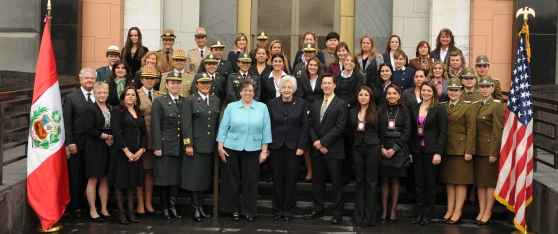-Posted by Dr. Alexander Garza,
Assistant Secretary for Health Affairs and Chief Medical Officer for DHS
We all know the importance of early detection in the treatment of diseases and medical emergencies. Routine screenings and monitoring as well as rapid response save thousands of lives every year. The same principles apply when mitigating the effects of biological threats, which is why DHS works with state and local officials through the BioWatch program to monitor for traces of dangerous pathogens in public places where large groups of people gather to ensure that we respond quickly when a potential threat is identified.
There has been some confusion reported in the news lately about how the BioWatch program works and what it is intended to do. First announced in 2003, BioWatch is the nation’s first early detection and warning capability for biological attacks. DHS partners with public health laboratories, which are members of the Centers for Disease Control and Prevention’s (CDC) Laboratory Response Network, to conduct rapid analysis and provide information and expertise to governors and local emergency officials when a pathogen is detected in order to determine whether it indicates a potential biological attack.
Recent media reports have incorrectly claimed that BioWatch is prone to “false positives” or “false alarms” that create confusion among local officials and first responders. These claims are unsubstantiated. To date, more than 7 million tests have been performed by dedicated public health lab officials and there has never been a false positive result.
Out of these more than 7 million tests, BioWatch has reported 37 instances in which naturally-occurring biological pathogens were detected from environmental sources. Many of the pathogens the BioWatch system is designed to detect occur naturally in the environment, such as the bacteria that causes anthrax, which has been used as a weapon, but is also found in nature. For example, near the nation’s Southwest border there have been a number of instances where a bacterium that is endemic in the environment has been identified. Thankfully, none of the instances were actual attacks. The detection of commonly occurring environmental agents is not a “false positive.”
Much like a home smoke detector goes off for both burnt toast and a major fire, the smoke detector is meant to notify you of a potential fire before it’s too late. BioWatch works very much the same way. If BioWatch detects a potential threat, state and local officials as well as first responders have the ability to investigate the incident to the fullest and determine if there is a credible threat to the public.
These tools alone cannot and do not declare that a biological attack has occurred. Experts must interpret the data and quickly make tough, logical decisions about the reality of the threat. BioWatch is designed to provide the nation with the greatest lead time possible to respond to the potential release of a biological agent. The faster we detect an event, the more lives we can save by responding and delivering medical countermeasures. Looking forward, the scientists who operate the system will continue their work to improve BioWatch to keep the nation safe from any potential biological threats.



